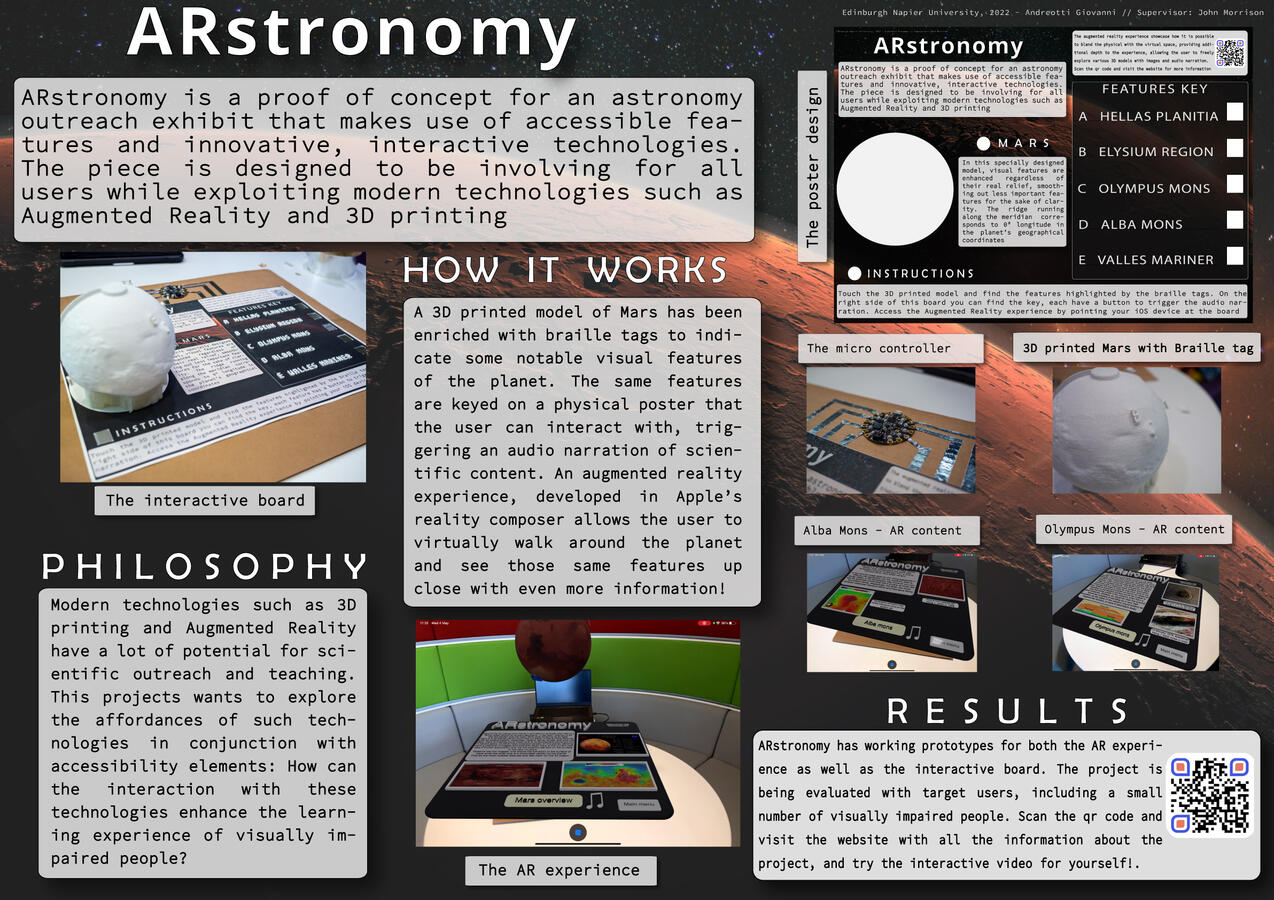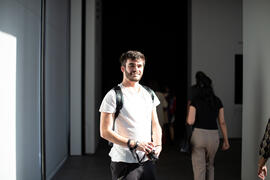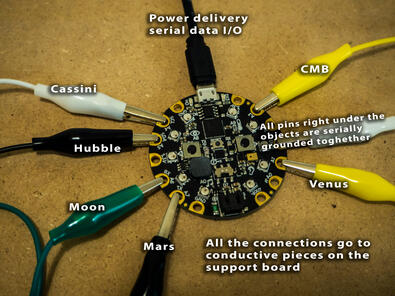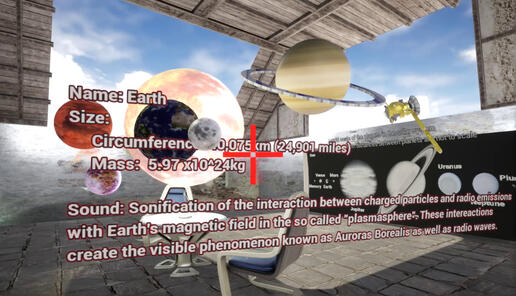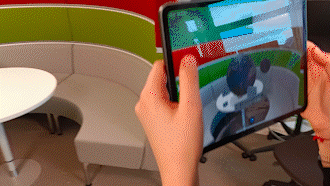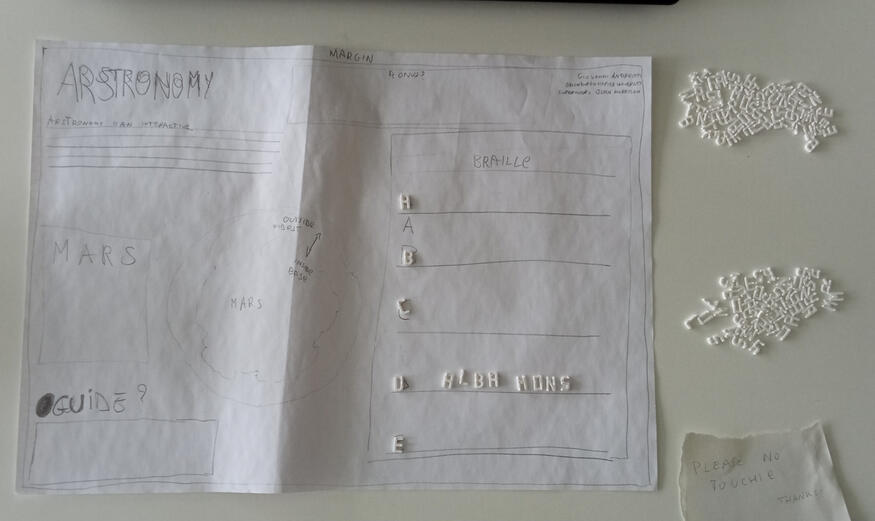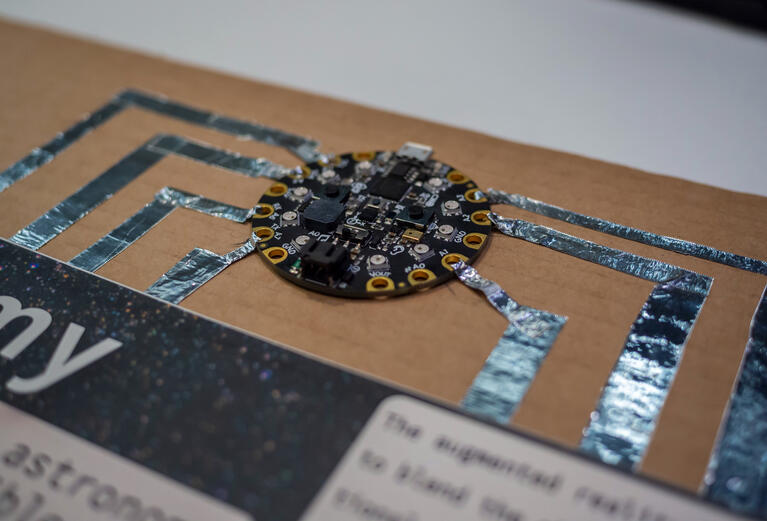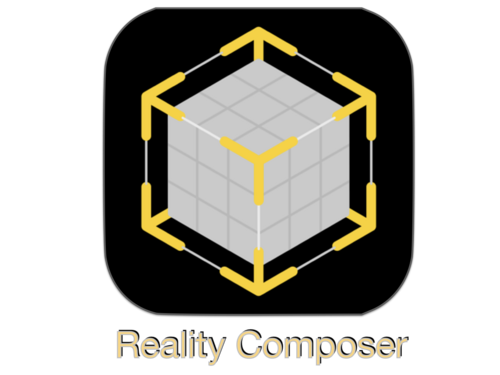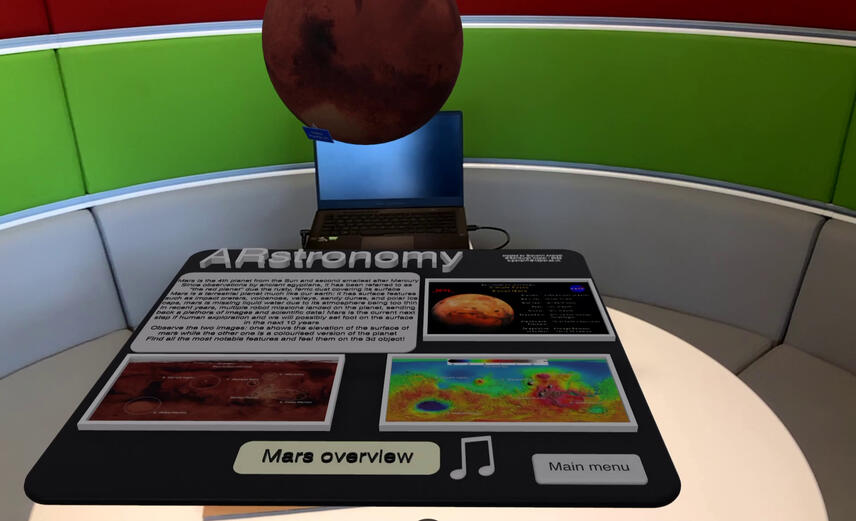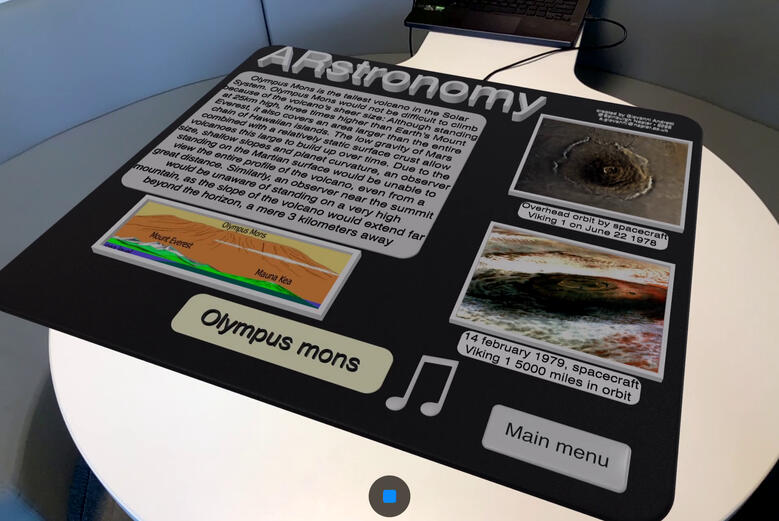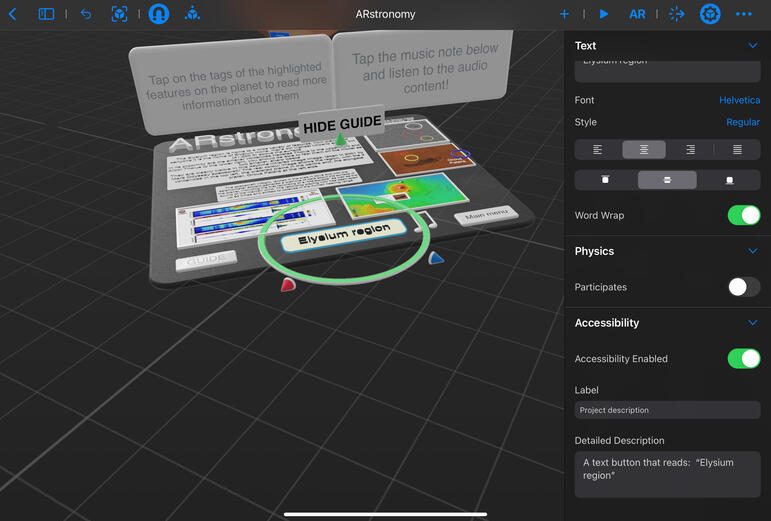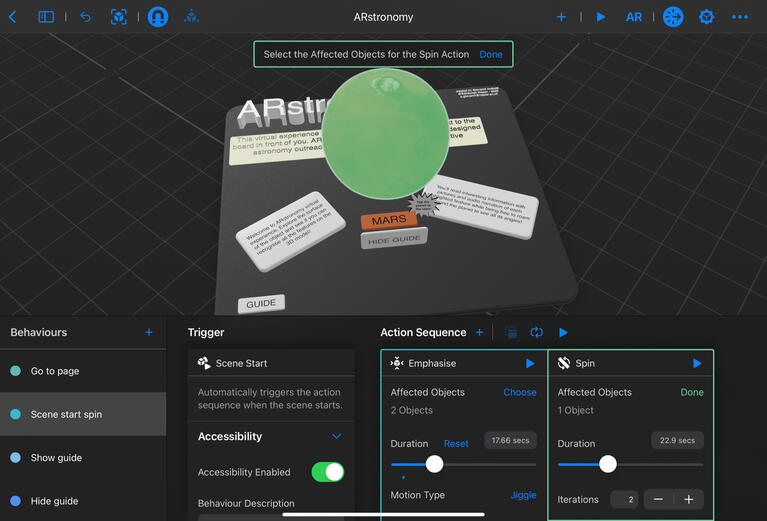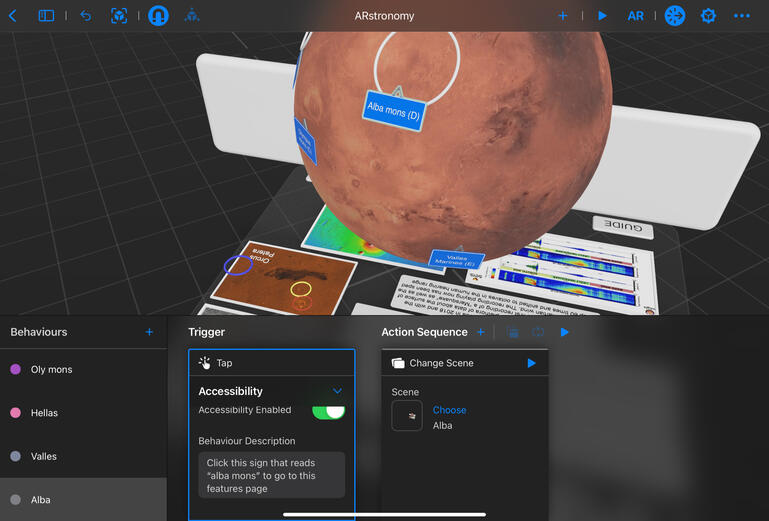ARstronomy
An inclusive interactive exhibit for astronomy outreach
Try the interactive walkthrough on EkoStudio!
_ A project by giovanni andreotti
I am a recent graduate from Edinburgh Napier University, with a BSc (Hons) in Digital Media & Interaction DesignExperienced creative in videography, VFX and still photography, I design interactive storytelling projects making use of virtual reality toolsFurther interests in politics, ethics and all technology things
Want to chat? Get in touch!
ARstronomy is a proof of concept for an astronomy outreach exhibit that makes use of accessible features and innovative, interactive technologies: exploiting modern technologies such as Augmented Reality and 3D printing, the aim of the piece is to explore how these modern tools, rarely used in scientific outreach context can be deployed in a real-world scenario, with particular interest to visually impaired users
The project is made of a physical exhibit and an accompanying AR application. A model of Mars is the keystone of both versions, with the interactive spots allowing the user to get more information about some of the red planet's features.The project has multipe goals:
Employ scientifically accurate material and appropriate language. Science communication
Make use of existing knowledge and materials from similar accessibility focused projects in astronomy
Leverage the new opportunities provided by interactive digital tools rarely used in outreach
The accompanying prototype digital experience showcases the potential of the AR in this context and how it is possible to blend the physical space and virtual worlds in a meaningful way: it replicates the “touchable” content provided by the physical exhibit while enhancing the experience through innovative means.
Project timeline
2018
Conceptualization at the outreach department of INAF/IRA (National Institute for Astrophysics, Institute for Radio Astronomy of Bologna)
2020
Feeling astronomyA low fidelity mock-up of the envisioned layout. See the slides of the pitch presentation here, you can watch the video and read the report.
2021
AstroSimAn experiment in Epic Games' unreal engine. An early attempt to explore the possibility to develop a completely virtual reality experience. Collection of 3d objects with animated orbit and interaction with text and sound information). This piece sparked the interest into the possibility of using a virtual environment to enhance the exhibit. The process and testing also helped understand the relationship between the user and virtual objects in a virtual space. Watch the video and read the report.
2021
Space explorerExperimentation with Apple's software Reality composer. Used to understand the general suitability of the software in the context of the project, issues, and affordances with regard of the accessibility as well as effectiveness of this technological tool for scientific outreach. The majority of the work for the AR experience was dedicated to adding feature specific content to the same “base layout” of the scene. You can watch the video here. As originally envisioned, it was always important to use appropriate language, concise explanation to deliver accurate scientific content.
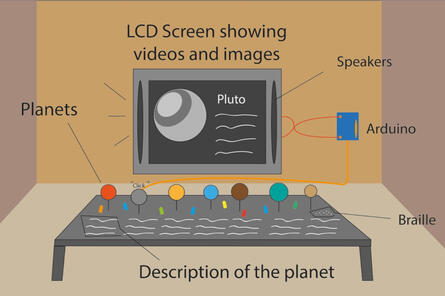
The initial envisioned design
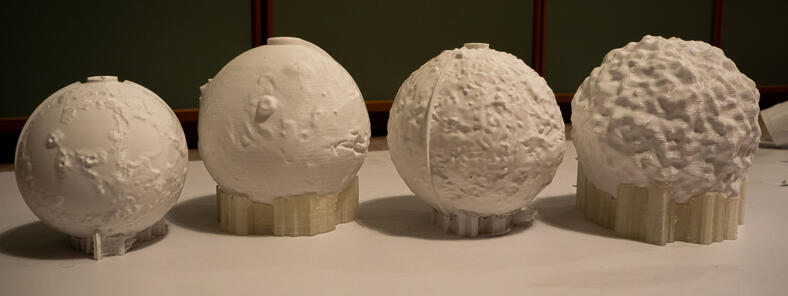
Some of the custom 3D objects

Feeling astronomy - The exhibit setup
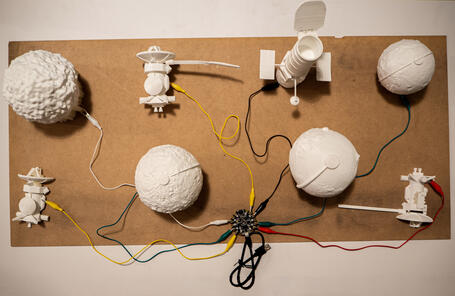
Feeling astronomy - The mock-up from above
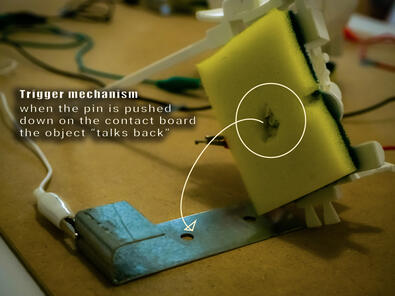
Feeling astronomy - The homemade trigger mechanism

Feeling astronomy - The microcontroller links

AstroSim - Interaction with Earth object

AstroSim - Walk around and interaction
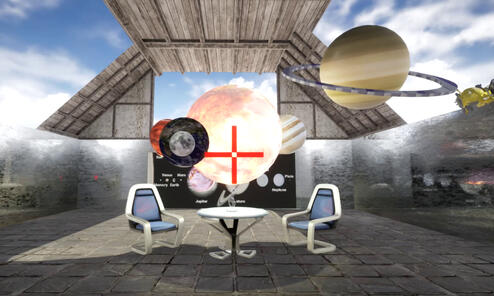
Astro Sim - The collection of objects
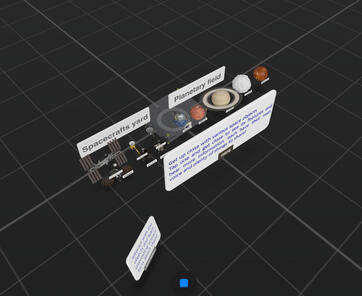
Space explorer - The home page of the experience with a collection of 3d objects to explore

Space explorer - Walk around, interaction
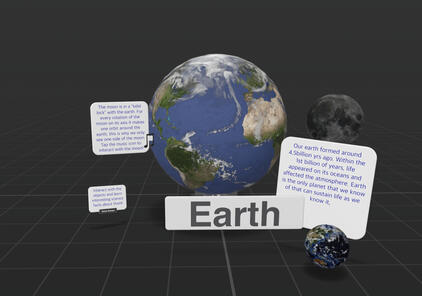
Space explorer - Detail of the "Earth page"
